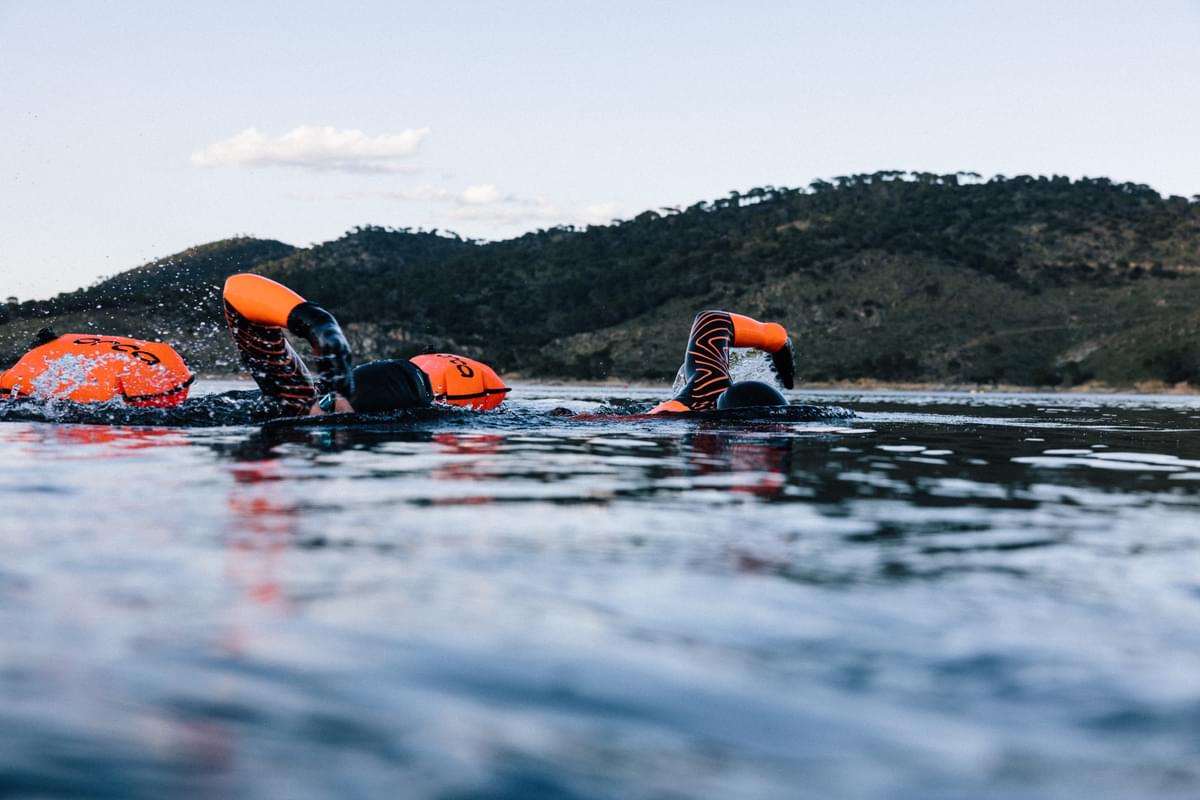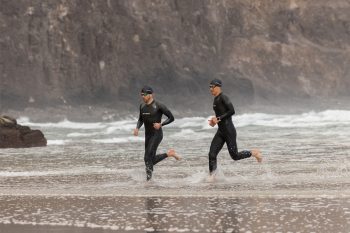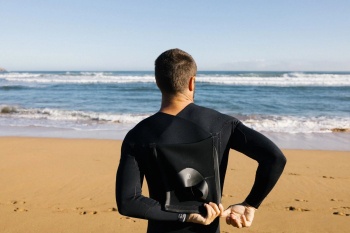How to Care for your Swim Wetsuit
Supported by Orca.
Washing your wetsuit after every swim, whether it’s a quick dip or big training day, is a great way to extend its lifespan. Leaving your soggy wetsuit to stew, on the other hand, is a sure way to do precisely the opposite.
In this wildly informative article in collaboration with Orca, we’ll give you a step-by-step guide to rinsing your wetsuit thoroughly and try to answer a few commonly asked questions about swim wetsuit care.
Can you put a wetsuit in the washing machine?
First things first: do not put your wetsuit in a washing machine. It won’t end well - That goes for swim wetsuits and surf wetsuits of all types!
Can you tumble dry a wetsuit?
Again, a categorically bad idea. Never put your wetsuit in a tumble dryer.
How to wash a wetsuit?
Rinsing a swim wetsuit is a fairly straightforward business.
For best results, fill a large tub, bucket, or sink with freshwater, and let your wetsuit soak in it for a few minutes. Get a bit of swirling action going in there, agitate the water, lift the wetsuit up and down, move it about… kind of as though it were a teabag.
Or simply rinse your wetsuit under the shower on both the inside and outside. Pay particular attention to the zipper, which is liable to jam or corrode if the saltwater isn’t rinsed off.

How to dry your wetsuit
When you leave it to dry, you should never hang your wetsuit by the shoulders.
Hang it doubled over at the waist and inside out. Give the sleeves and legs a bit of a squeeze too, which will speed up the drying process.
Leave it to dry fully on the inside. Once it’s bone dry on the inside, turn it the right way out and leave it to dry on the outside. It’s also a good idea to keep your wetsuit away from direct sunlight, as the UV rays can do some serious damage.
How to pee in a wetsuit
Yes, people actually ask this… Maybe you’re one of them.
There is no secret here. If you’re in the water wearing a wetsuit, and need a wee, you have just three options:
- Hold it in. This can be quite uncomfortable, especially when trying to focus on your stroke pattern and breathing.
- Let it all out. Obviously this is disgusting, but also weirdly fun. Do have a good look around before, as you can’t be having a leak when swimming near to others - But it’s not a bad race strategy (you didn’t hear it from us).
- Return to shore, go for a wee, wade back out. This is potentially very annoying, especially if it’s a long swim back, but can sometimes be incorporated into a mini triathlon-like run along the beach (if you’ve drifted away from your chosen course, say).
If the water temperature allows, try and flush your suit through as best you can. Rinse thoroughly afterwards.
How to store a swim wetsuit
When you’re storing your Orca wetsuit, and particularly if you’re not going to be using it for a couple of weeks or months – the end of the season, say – it’s essential to make sure it’s dry inside and out.
How to transport a wet wetsuit
If you’re travelling by car this is simple enough. We think it’s best to adopt the surfer’s approach, by keeping a large bucket in the boot, or failing that use a tub of some sort, or make do with a bag-for-life.
When you’re out and about, however, on a bike or on foot or on public transport, you want something that’s both easy to carry and watertight, so your suit doesn’t drip seawater (or river water) everywhere. A drybag is the ideal solution.
More wetsuit care advice
Wetsuits are fragile and expensive things, even more so when they’re specialist swimming wetsuits - so take care of them. The smoothskin exterior that differs from surf suits is less durable. In particular, try to keep your wetsuit from coming into contact with anything sharp or abrasive.
One major and often overlooked cause of swim wetsuit damage is nails, as in fingernails and toenails. Keeping your nails neatly trimmed and any jagged edges filed smooth is a good way to avoid nicks in the material of your wetsuit, which often occur during the changing process. This is also something to keep in mind when first buying the wetsuit. If you’re not sure about the size required, be sure to read our Guide to Choosing a Wetsuit for Open Water Swimming before browsing.

Another common mistake: stamping your wetsuit off on a gravelly car park. Swim wetsuits can be a pain to get off, but using one foot to help liberate the other foot tends to mean trampling your wetsuit into the tarmac and damaging the neoprene. Sit down if necessary, and use your hands.
A changing mat or changing bucket is a very nifty accessory for this very reason. Forming a barrier between your wetsuit and the ground, it will also keep your feet nice and warm. Plus once your wetsuit’s off you can use the cinch to transform the changing mat into a wetsuit bag.
You can repair minor wetsuit damage using wetsuit glue and/or a sewing kit. If you want a neat, sturdy, long-lasting repair, however, and/or the damage to the wetsuit is extensive, then we urge you to check out the WSO+ Repair Service in collaboration with Bodyline.
Need some more info about open water swimming?
Check out our other posts in collaboration with Orca…
A Guide to Choosing a Wetsuit for Open Water Swimming
9 Essentials for Open Water Swimming
What’s the Difference Between a Swim Wetsuit and a Surf Wetsuit?
A Beginner’s Guide to Competitive Open Water Swimming
Should I Buy a Specialist Open Water Swimming Wetsuit?
9 Training Tips for your First Triathlon
Orca wetsuit guide
-
Shop the full Orca range - HERE
Shop the full Orca wetsuit range - HERE
Explore our recent collaboration with Katie Maggs - HERE
Updated on 28th March 2024
Originally published on 4th March 2024 in Swimming























































 Visit the US site
Visit the US site  Weiter nach CH
Weiter nach CH